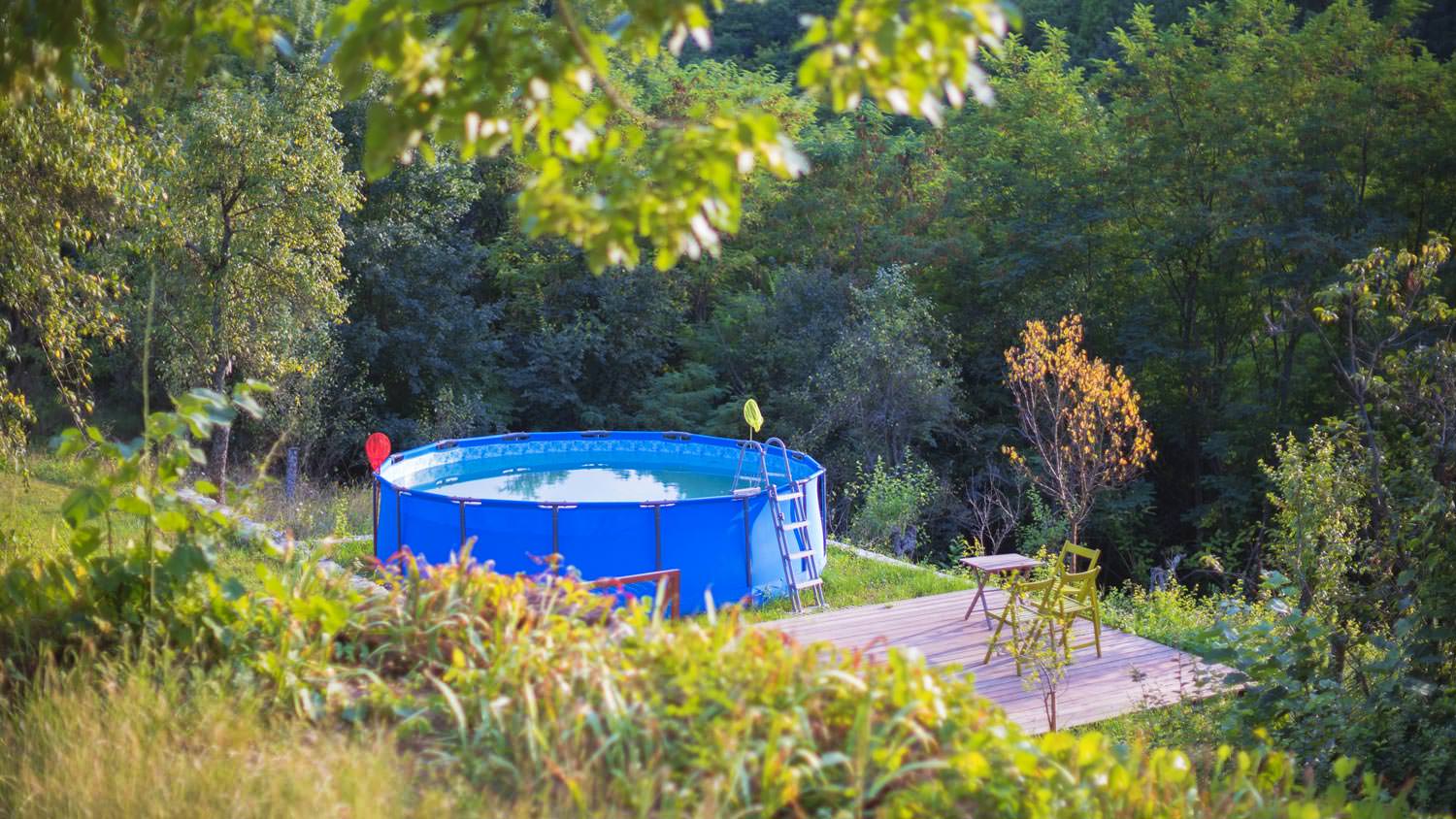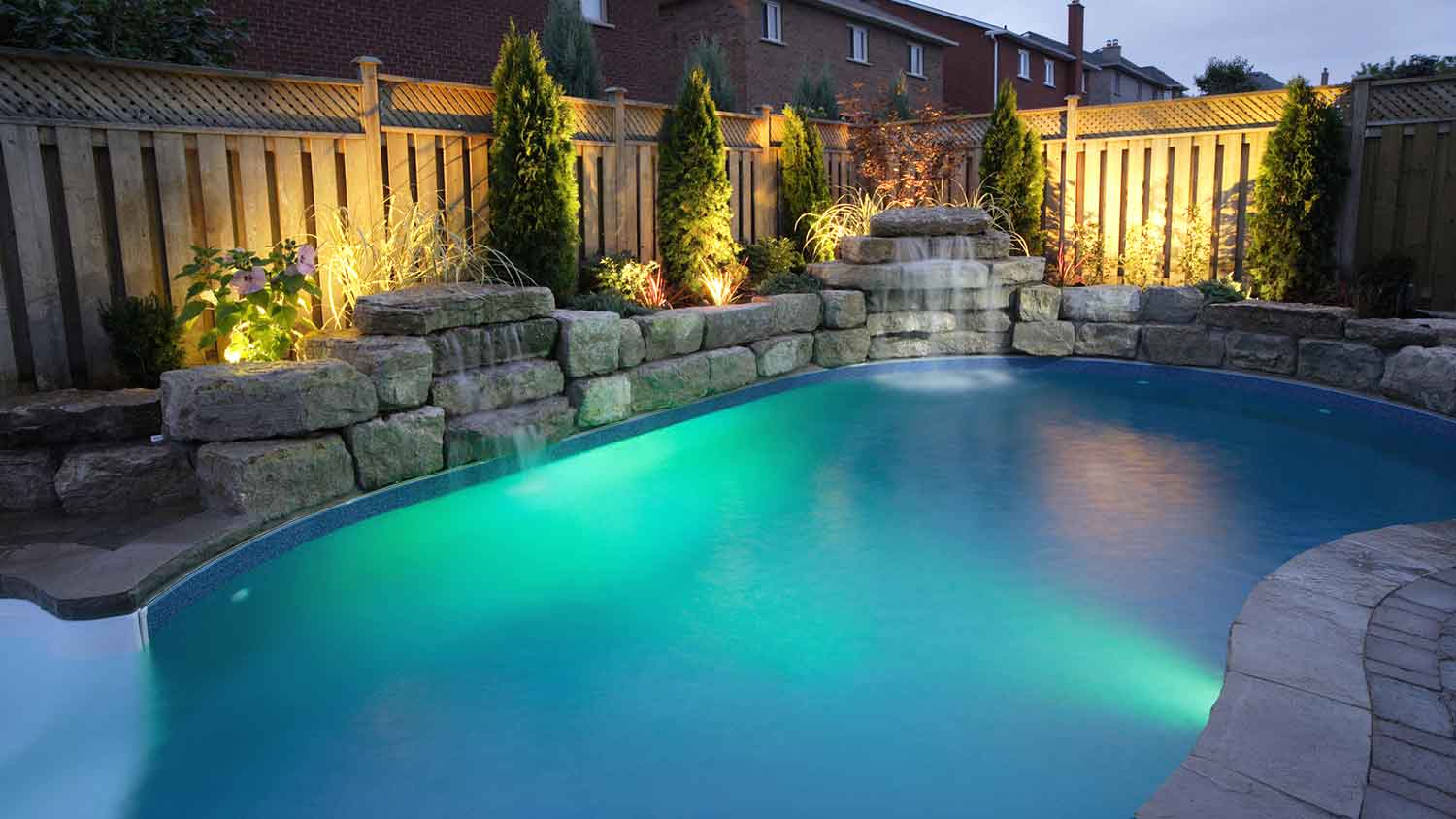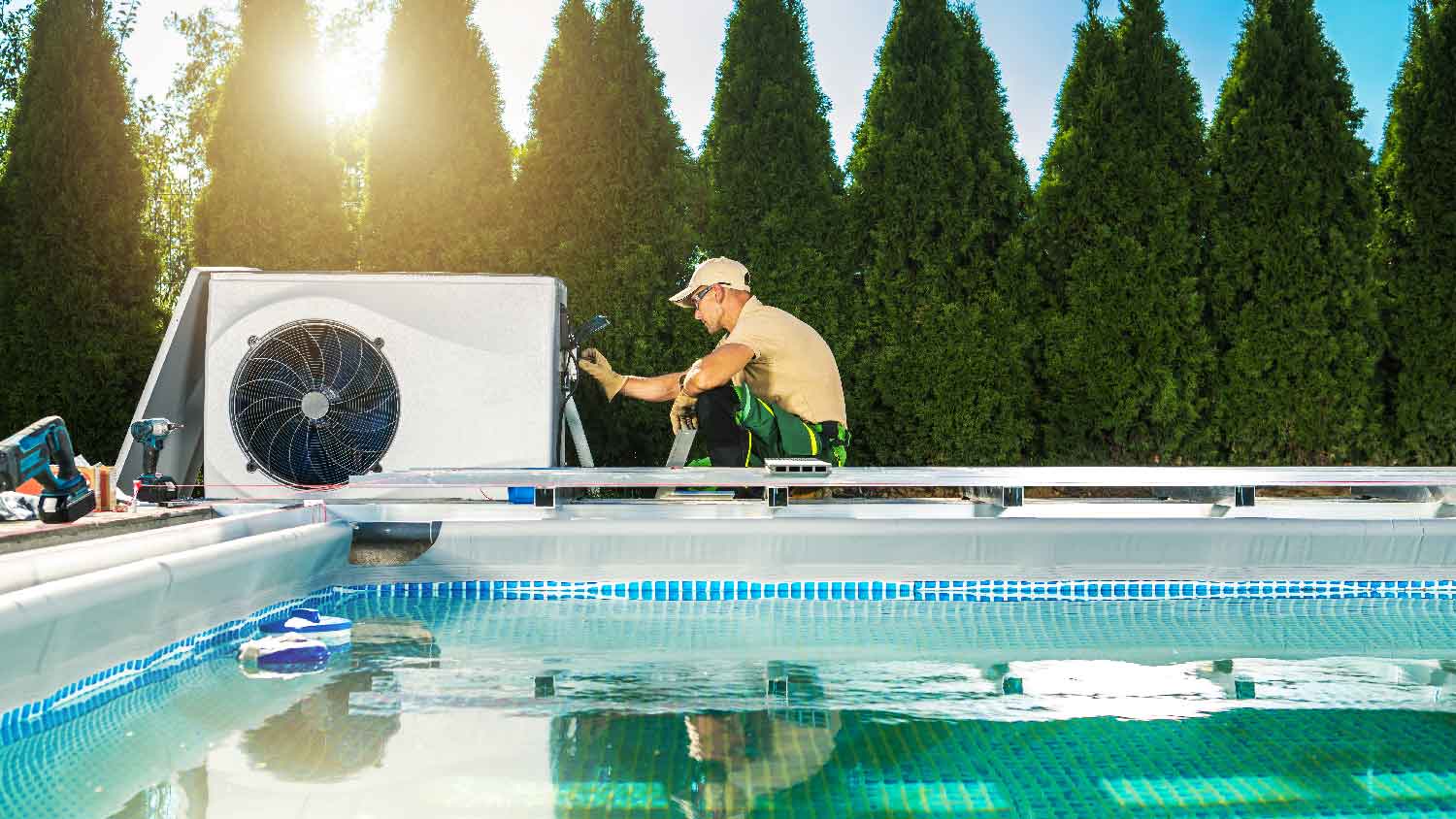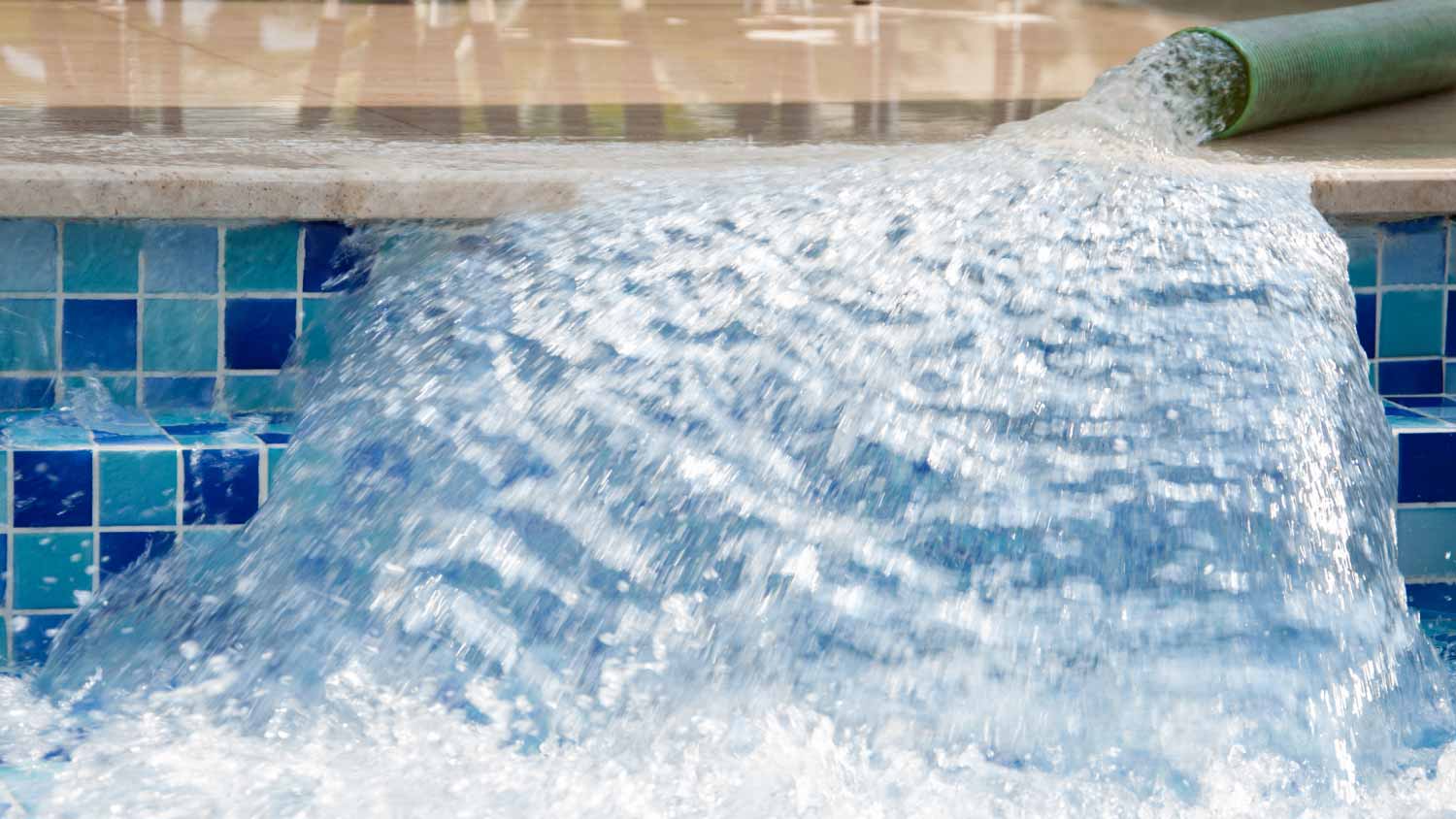
It’s time to kick back and cool down for the summer. If you’re ready to make a splash, check out how much an in-ground pool costs with this guide.
A semi-inground pool costs an average of $12,000


On average, semi-inground pool costs range from $7,000 to $20,000, with an average of $12,000.
Pool size, materials, and labor are the biggest cost factors when installing a semi-inground pool.
Permits, excavation, and optional features like heaters and pool decks add to the total project price.
Professionally installing a semi-inground pool ensures safety, quality, and potential warranties.
This article was updated using automation technology and thoroughly reviewed for accuracy by HomeAdvisor Editor Ryan Noonan.
You can expect to spend an average of $12,000 on a semi-inground pool, although projects range from $4,000 to $25,000, with most falling between $7,000 and $20,000. The type and size of your pool, as well as the materials you choose, determine the final price tag. Build a room in your budget for those factors, and partner with a trusted installer to ensure your new pool stands the test of time.
The size and type of pool impact the amount of materials and labor required for installation, affecting the final pool cost. Here’s a look at how your total cost breaks down.
Size is the first budget driver—more square footage means more materials and extra installation hours, so you’ll pay more for a bigger footprint.
| Pool Diameter (Feet) | Average Cost |
|---|---|
| 12 | $9,000 |
| 16 | $14,000 |
| 20 | $20,000 |
| 24 | $25,000 |
A semi-inground pool can be constructed by lowering an above-ground pool or raising an inground pool. Above-ground pools are more affordable and offer a greater pool depth. These types last an average of seven to 15 years.
Raising an inground pool is more costly because it involves building a retaining wall to support the structure. However, it offers a greater range of aesthetic options and better durability, with lifespans of up to 75 years.
Compared to the average cost to build a new pool, semi-inground designs are slightly more costly than above-ground pools and hot tub installations, but more affordable than inground types.
Set aside $3,000 to $7,000 of your budget for labor. Your final bill depends on the pool’s size and style—raising an in-ground pool with a retaining wall, for instance, requires extra time and crew members, so costs increase quickly.
Expect a surcharge if your yard is tough to access. Tight driveways, steep slopes, or thick landscaping slow down heavy equipment, which means your crew spends more hours on-site, and that extra time shows up on the invoice.
If you live in a rural area, you may have to pay transportation fees for laborers and materials.
Even though a semi-inground build involves less digging than a full in-ground pool, your crew still has to clear and excavate the space. That prep work costs between $400 and $1,500, depending on the pool’s size.
Check local rules before breaking ground—most communities require a pool permit, which adds $250 to $2,000 to the project cost.
Want to boost comfort or style? Features like lighting and heaters can do the trick. Here’s what those upgrades cost.
| Feature | Average Cost (All-In) |
|---|---|
| Lighting | $625–$1,700 |
| Heater | $300–$5,700 |
| Cover | $200–$4,500 |
| Deck | $3,000–$12,000 |
| Safety fence | $1,500–$10,000 |
Pools come with ongoing costs for cleaning and safety. The cost to maintain a pool averages $50 to $100 per hour for basic tasks like cleaning, pH testing, and checking filters. Pool chemicals average $15 per month.
In addition to basic maintenance, you’ll need to install a pool pump to filter the water. A pool pump costs an average of $300 to $2,700 to replace.
Several materials are available for constructing semi-inground pools to create your desired aesthetic. Material choices also impact the final cost of your pool.
| Material | Average Cost |
|---|---|
| Steel | $800–$3,000 |
| Resin | $1,000–$3,000 |
| Aluminum | $1,000–$4,500 |
| Vinyl | $6,300–$8,400 |
| Fiberglass | $15,800 |
| Concrete | $22,000 |
Above-ground steel pools are the most affordable option, costing between $800 and $3,000 for materials. They’re strong and sturdy but prone to rust and have a shorter lifespan than other types.
Resin above-ground pools cost $900 to $3,500 for materials and provide a functional, affordable pool. Unlike steel, resin pools aren’t prone to rust or oxidation. However, they may fade or crack over time.
Aluminum pools are the most durable and costly of the above-ground options, averaging $1,000 to $4,500 for materials. Like resin, aluminum is resistant to rust and oxidation but is sturdy and lightweight.
Installing a pool with a vinyl liner costs between $6,300 and $8,400 for the initial materials. Vinyl is the most affordable inground option and offers plenty of flexibility to fit different pool shapes. However, vinyl liners must be replaced every 10 years.
Fiberglass liners have a longer lifespan than vinyl but are slightly more costly and offer less shape flexibility. They cost an average of $15,800 for initial materials and last an average of 25 years.
Concrete inground pools are the most costly, averaging $22,000 for materials. However, they last up to 75 years and can be customized with stone or pool tile to create a unique look.
Installing a semi-inground pool can increase the value of your home, although this depends on the type of pool and the homeowner's preferences. A semi-inground pool is more likely to increase home value if you live in a warm climate where pools are common.
More durable designs, like raised inground pools made from long-lasting materials like concrete, may also offer a greater increase in value. However, pools come with maintenance and remodeling costs, which may not suit every buyer. When deciding whether to install a semi-inground pool, consider how it will increase your enjoyment of your home rather than viewing it as a guaranteed investment for the property.
Semi-inground pool installation requires professional tools and expertise, but careful preparation and planning can keep the project budget-friendly:
Prep the yard early. Clear out shrubs, furniture, or vehicles so the crew can roll in their equipment without delays.
Schedule smart. Installers book up quickly in spring and summer, so you may be able to get better rates in the fall. Skip winter in cold climates—frozen ground can stall excavation.
Contact multiple pool installation professionals in your area to compare quotes.
Consider installing add-ons yourself. While pool installation is best left to the pros, you can save on features like decking and pool enclosure costs if you feel comfortable tackling a DIY project.
It’s also important to consider upfront vs. long-term costs when budgeting for your semi-inground pool. Materials like steel and vinyl have the lowest upfront cost but have a shorter lifespan. For a long-lasting pool, sturdier materials like aluminum and concrete can save you on pool liner repair costs and other common pool repairs.
Installing a semi-inground pool can be a complex project, especially if excavation or retaining walls are needed. While a DIY approach might save money if you have the necessary skills and equipment, mistakes can lead to safety hazards, structural problems, or costly repairs. Hiring a professional ensures expert installation, adherence to local guidelines, and often includes warranties that protect your investment. Take an honest look at your skills, tools, and free time before you decide to DIY or bring in a pro.
No place is more important than your home, which is why HomeAdvisor connects homeowners with local pros to transform their houses into homes they love. To help homeowners prepare for their next project, HomeAdvisor provides readers with accurate cost data and follows strict editorial guidelines. After a project is complete, we survey real customers about the costs to develop the pricing data you see, so you can make the best decisions for you and your home. We pair this data with research from reputable sources, including the U.S. Bureau of Labor Statistics, academic journals, market studies, and interviews with industry experts—all to ensure our prices reflect real-world projects.
From average costs to expert advice, get all the answers you need to get your job done.

It’s time to kick back and cool down for the summer. If you’re ready to make a splash, check out how much an in-ground pool costs with this guide.

Who installs above ground pools? Learn when to hire a pool installer vs. landscaper, what to expect, and the typical cost range.

Not sure who to call to fix a pool light? Learn why a pool repair service is best, what electricians can do, and what replacement costs.

Need to know who to call to fix a pool heater? See why a pool electrician is best for safe, code‑compliant pool heater repair—find a pro today.

Wondering who to hire to remodel a pool? Learn when to call a pool remodeling company vs. a pool installer, plus the steps pros take to transform your pool.

Who can I call to fill my pool with water? Compare pool water delivery vs. other options, see costs, and learn how pros get it done.